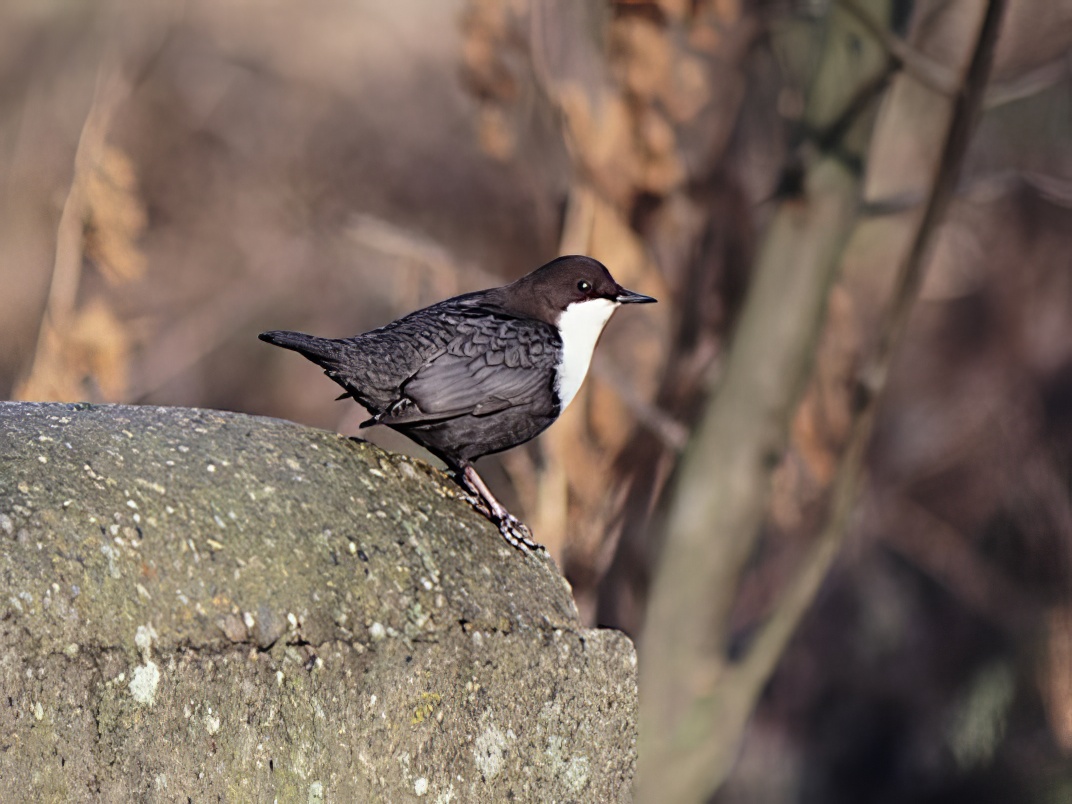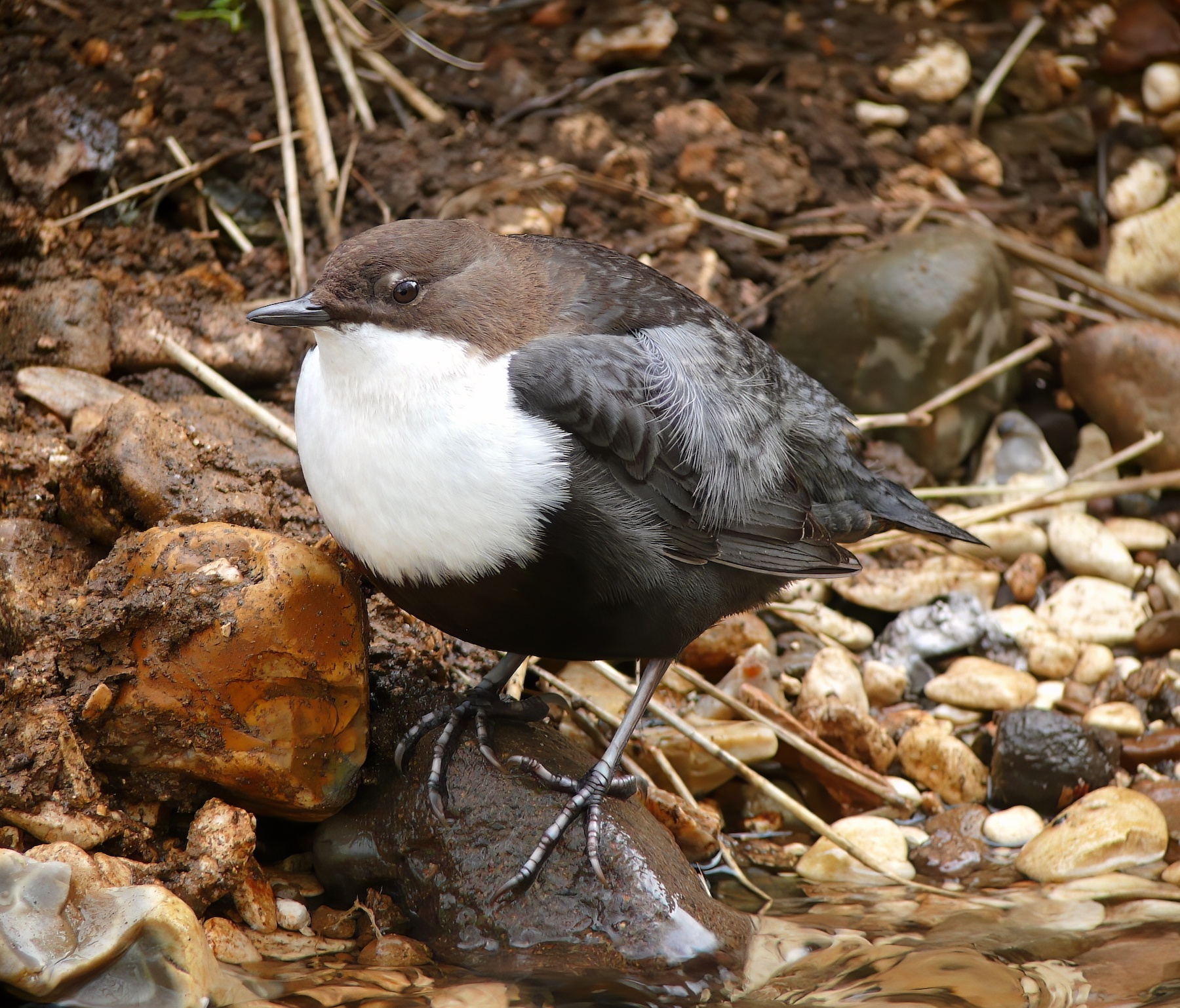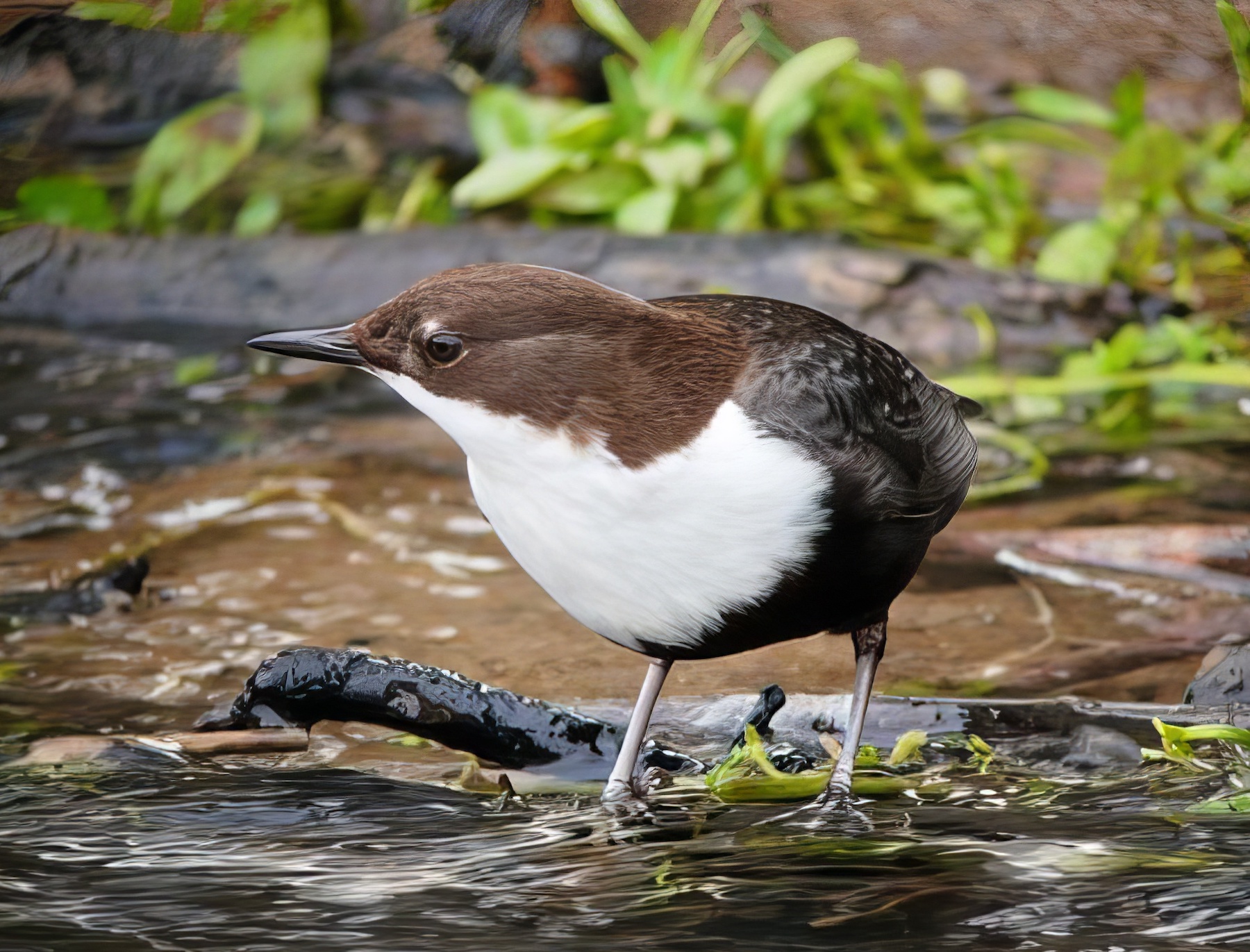White-throated Dipper, Cinclus cinclus gularis, and Black-bellied Dipper C. c. cinclus



White-throated Dipper C. c. gularis
The most familiar British subspecies, White-throated Dipper is found over most of Scotland (except west), north, central, and west England and Wales. It has occurred about 20 times between 1870-1989, mainly October-November, but also in early autumn and winter (L&A 1989). The earliest record was of one at North Cotes August 27th 1935. One bird, probably the same individual, wintered on the River Lud at Louth in the five successive winters from 1951-52 to 1955-56, another wintered there 1963-64. We have no other records, or indeed photographs, of this race since that time.
Black-bellied Dipper C. c. cinclus
The nominate race cinclus has occurred on at least 15 occasions and is subject to medium or long-distance partial migration. A review of historic records by BBRC of all records prior to the first acceptable record, which occurred in Shetland during November 1898 (BOURC (2018), Ibis 160: 229), are found not proven. Those early records, along with others from elsewhere in the UK are listed by Naylor (2023) and are omitted. Note that apart from this race and hibernicus, found in Ireland and west Scotland, there eleven other races occur across North Africa, the Middle East, and Asia. However, the current BBRC view is a pragmatic one in that birds with little or no chestnut on the belly in eastern Britain, particularly in the Northern Isles and lowland south-east England away from the range of gularis, are likely to be nominate cinclus (Holt et al 2018).
Two retrospective records submitted to BBRC were those of April 11th-13th 1967 at Humberston, which was trapped, and the second at Donna Nook November 21st-25th 1980 (British Birds 107, 628-629); prior to 2006, records of cinclus were not assessed by the BBRC. Other records which were well-documented at the time and acceptable to the LBRC were at Lincoln/Heighington 1993/4; Belleau February 2008; Gibraltar Point NNR November 2008 and Saltfleetby-Theddlethorpe NNR February 2011. There have been at least 15 records; it was considered that the 1993 bird in the Lincoln area moved between sites as indicated in the table. Two of therecords (Belleau 2008; Saltfleetby-Theddlethorpe NNR 2011) had not been submitted at the time and were discovered during research for the Birds of Lincolnshire (2021). This subspecies remains a county rarity with a record roughly every 3-4 years since 1963 with none since 2011.
| Site | First date | Last date | Count | Notes |
| Tealby | 03/02/1963 | 17/03/1963 | 1 | |
| R. Lud, Louth | 08/03/1967 | - | 1 | Indeterminate race, gularis or hibernicus |
| Buck Beck, Humberstone | 11/04/1967 | 15/04/1967 | 1 | Trapped |
| R. Lud, Louth | 15/02/1969 | - | 1 | |
| Donna Nook | 21/11/1980 | 25/11/1980 | 1 | |
| Riseholme | 27/11/1980 | 04/01/1981 | 1 | |
| R. Lud, Louth | 08/12/1980 | - | 1 | |
| The Beck,Little Cawthorpe | 05/03/1988 | 07/03/1988 | 1 | |
| Stamford | 01/12/1990 | 23/01/1991 | 1 | Tinwell pumping station, R. Welland |
| Lincoln Arboretum | 14/10/1993 | 15/10/1993 | 1 | Feeding on a small pond |
| Branston | 03/11/1993 | - | 1 | Thought to be the Lincoln Arboretum bird |
| Pode Hole, Spalding | 13/11/1993 | 20/11/1993 | 1 | Photograph unavailable |
| Cliff Farm, Heighington | 27/11/1993 | 05/03/1994 | 1 | Thought to be the Lincoln Arboretum & Branston bird |
| R. Lud, Hubbard's Hills, Louth | 24/01/2002 | 19/02/2002 | 1 | |
| Great Eau, Belleau | 21/02/2008 | 24/02/2008 | 1 | |
| Gibraltar Point NNR | 04/11/2008 | - | 1 | |
| Saltfleetby-Theddlethorpe NNR | 13/02/2011 | - | 1 |
Finder’s report: Black-bellied Dipper at Cleethorpes, April 11th, 1967, third county record.
by S. Lorand (SL).
Note: this was the third county record of the nominate race C. c. cinclus of N and W Europe; account taken from the original BBRC submission which was submitted by SL after a BBRC appeal for historic records. The initials of the finders were RS, PH and RM, but SL had no record of their full names at the time.
Circumstances
The bird had been found on Buck Beck near a small sea-bank pumping station by a golf course on the evening of April 11th, 1967, and was watched down to 12-15 yd. One point which stood out was the lack of any chestnut on the belly, the whole of which was charcoal black. The bird spent a lot of time under a road bridge undisturbed by traffic or passers-by, or else it frequented a small muddy spit near the pumping house where it waded into the water several times, and completely submerged twice. It finally rested on a small lock gate at the base of the pumping house, and it was last seen there just before dark. The bird was seen again on April 13th when it was trapped and ringed.
The description of this bird in the hand points to it being a bird of the continental race C. c. cinclus. The complete absence of any chestnut coloration on the belly, in a bird which should be in breeding condition, would rule out the British race C. c. gularis, especially in view of the weather conditions which could well have drifted a continental bird across the North Sea.
Description
The bird was processed and observed in the hand by a number of ringers and birders. It was trapped in a single panel mist-net erected under the road bridge. It was ringed as CS32223, and the following biometrics and description were taken:
Wing 86 mm; bill 23 mm; tarsus 26.5 mm; tail 49 mm; and weight 60.5 gm.
Head – dark chocolate brown, this colour extending onto the nape. White chin, throat, face below the lores and ear coverts, forming a bib extending to upper breast.
Underparts - chocolate brown extended forward onto the bib at the sides of the breast. Lower breast deep brown, almost black, shading to charcoal below, and down to vent, darkest on central belly feathers. Flanks dark grey but lighter than belly. Undertail coverts as flanks, but with faint whitish tips. Feathers of lower breast (hidden by tips of white lower bib) rather lighter and tending to faint rufous brown on tips on just one row of feathers.
Upperparts – mantle, back and rump dark charcoal grey with brown edges and tips, giving the whole of the upperparts a scaly appearance. Scaling strongest on centre of back (where broadest tips). Uppertail coverts similar, but very worn with traces of white tips. Tail black-brown, very like female Blackbird, with faint brownish edgings.
Wings – primaries dark brown and secondaries similar with grey outer webs, most pronounced along edges. Primary coverts as primaries with pale tips, especially on inner webs. Bastard wing as primaries. Greater coverts as secondaries. Median and lesser coverts with dark centres. Underwing coverts dark brown with faint white tips on inner feathers. Scapulars as back.
Bare parts - bill black, iris redder chocolate brown than the head feathers, pupils black. Legs dark grey, though foreside of legs much lighter grey and almost oyster coloured. Very pale scales on toes.
References
Holt, C. and the Rarities Committee (2018). Report on Rare Birds in Great Britain in 2017. British Birds 111(10): 557-627.
Naylor, KA 2023 Historical Rare Birds <https://www.historicalrarebirds.info/>, accessed January 2023.
(Account as per new Birds of Lincolnshire (2021), included January 2023)

